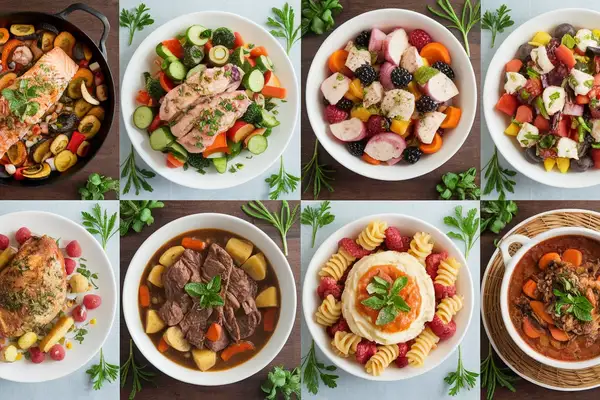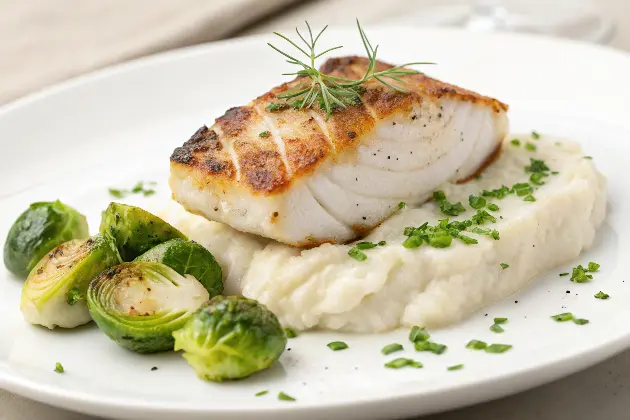30-Day Low FODMAP Diet Plan For IBS
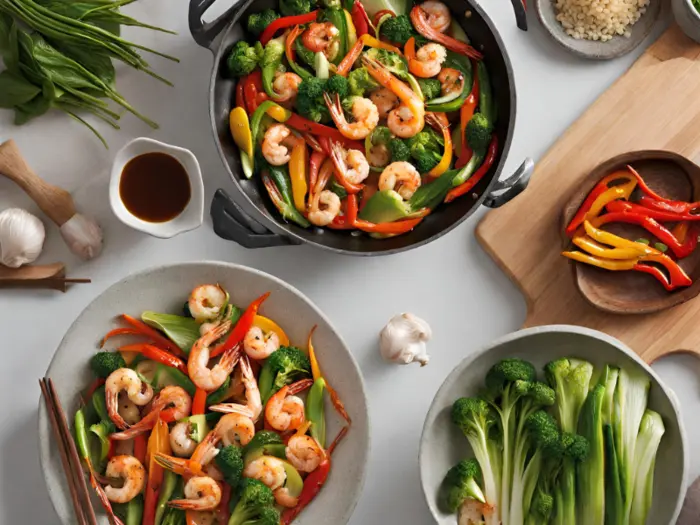
What is a Low FODMAP Diet?
This post may contain affiliate links, meaning I may earn a commission if you make a purchase, at no extra cost to you. I only recommend products I trust. Thank you for your support.
A Low FODMAP diet is a dietary approach designed to reduce symptoms of irritable bowel syndrome (IBS) and other digestive disorders.
The acronym FODMAP stands for Fermentable Oligosaccharides, Disaccharides, Monosaccharides, and Polyols, which are found in a variety of foods such as wheat, onions, garlic, dairy products, certain fruits, and sweeteners.
FODMAPs are specific types of carbohydrates that are poorly absorbed in the small intestine, leading to bloating, gas, stomach pain, and other digestive discomforts in some individuals.
These compounds can be poorly absorbed in the small intestine and can cause digestive symptoms such as bloating, gas, abdominal pain, and diarrhea in individuals with sensitive guts.
A low FODMAP diet has gained popularity in recent years for its ability to improve gut health and alleviate symptoms of digestive disorders.
By following a low FODMAP meal plan, you can reduce the intake of these troublesome compounds and provide relief for your digestive system.
30-Day Low FODMAP Meal Plan (Low FODMAP Diet Menu)
Now that we have a better understanding of the benefits of a low FODMAP diet, let’s dive into creating a 30-day low FODMAP meal plan that is both delicious and gut-friendly.
These low FODMAP meals include a variety of balanced low FODMAP breakfast, lunch, and dinner recipes ensuring a healthy and varied diet while managing IBS symptoms.
Day 1
- Breakfast: Gluten-free white toast + peanut butter (2 pieces)
- Lunch: Fresh Spring (Rice-Paper) Rolls with a maximum of 3 veggies, and optional protein (Omit avocado and scallions)
- Dinner: 4 ounces grilled salmon, 1 cup quinoa, cooked, ½ cup roasted broccoli with 1 tablespoon olive oil
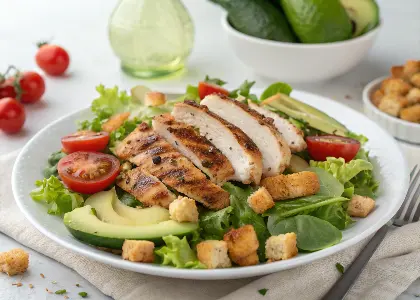
Day 2
- Breakfast: Scrambled eggs with spinach and tomatoes (limit to ½ cup) cooked in olive oil, served with a side of strawberries (limit to 10 berries)
- Lunch: Grilled chicken breast salad with mixed greens, cucumber slices (limit to 10 slices), and a low FODMAP dressing
- Dinner: Baked salmon fillet seasoned with herbs, served with quinoa (limit to ½ cup cooked) and steamed carrots (limit to ½ cup)
Day 3
- Breakfast: 1 cup lactose-free yogurt, ¼ cup gluten-free granola, ½ cup blueberries
- Lunch: 3 ounces tuna mixed with ¼ avocado on two slices gluten-free bread and slice of tomato
- Dinner: 3 ounces grilled salmon, 1 cup gluten-free pasta mixed with ½ cup low FODMAP tomato sauce (no onions or garlic), 1 cup sautéed spinach in 1 tablespoon olive oil
Day 4
- Breakfast: Overnight oats made with lactose-free milk, topped with sliced banana (limit to ½ banana) and a sprinkle of chia seeds.
- Lunch: Turkey and lettuce wrap with a small amount of lactose-free cheese, served with carrot sticks (limit to 10 sticks) and a side of grapes (limit to 10 grapes).
- Dinner: Stir-fried tofu with bell peppers, zucchini (limit to ½ cup), and gluten-free soy sauce, served with a side of brown rice (limit to ½ cup cooked).
Day 5
- Breakfast: Greek yogurt (ensure it’s lactose-free) with blueberries (limit to ¼ cup) and a sprinkle of low FODMAP granola.
- Lunch: Quinoa salad with cherry tomatoes (limit to 5 tomatoes), cucumber slices (limit to 10 slices), feta cheese (small amount), and a low FODMAP dressing.
- Dinner: Grilled shrimp skewers with bell peppers and cherry tomatoes (limit to 5 tomatoes), served with a side of mashed potatoes (limit to ½ cup) made with lactose-free milk.
Day 6
- Breakfast: One slice of gluten-free bread, 2 tablespoons peanut butter, one banana
- Lunch: Vegetable frittata baked with 3 eggs, ½ medium sweet potato, ½ grated zucchini, and 2 tablespoons parmesan cheese
- Dinner: 4 ounces grilled salmon, 1 cup brown rice, cooked, ½ cup roasted broccoli with 1 tablespoon olive oil
Day 7
- Breakfast: Omelette with spinach, red bell peppers, and a small amount of lactose-free cheese, served with a side of orange slices (limit to ½ orange)
- Lunch: Quinoa-stuffed bell peppers (limit to 1 bell pepper) with ground turkey, topped with a sprinkle of lactose-free cheese
- Dinner: Baked chicken thighs seasoned with herbs, served with roasted sweet potatoes (limit to ½ cup) and steamed green beans (limit to ½ cup)
Day 8
- Breakfast: Smoothie made with lactose-free yogurt, spinach, banana (limit to ½ banana), and a spoonful of almond butter
- Lunch: Grilled steak salad with mixed greens, cherry tomatoes (limit to 5 tomatoes), cucumbers (limit to 10 slices), and a low FODMAP dressing
- Dinner: Baked cod fillet with lemon and herbs, served with quinoa (limit to ½ cup cooked) and steamed asparagus (limit to ½ cup)

Day 9
- Breakfast: Low FODMAP protein pancakes topped with strawberries (limit to ¼ cup) and a drizzle of maple syrup
- Lunch: Sushi bowl with cooked shrimp, cucumber slices (limit to 10 slices), avocado (limit to ¼ avocado), and gluten-free soy sauce
- Dinner: Turkey meatballs with marinara sauce (ensure it’s low FODMAP), served with gluten-free pasta (limit to ½ cup cooked) and a side of steamed broccoli (limit to ½ cup)
Day 10
- Breakfast: Chia seed pudding made with lactose-free milk, topped with kiwi slices (limit to ¼ kiwi) and a sprinkle of shredded coconut
- Lunch: Chicken Caesar salad with romaine lettuce, grilled chicken breast, lactose-free Caesar dressing, and a sprinkle of Parmesan cheese (small amount)
- Dinner: Grilled pork chops with a side of roasted carrots (limit to ½ cup) and mashed potatoes (limit to ½ cup) made with lactose-free milk

Day 11
- Breakfast: Greek yogurt (lactose-free) with blueberries (¼ cup) and a sprinkle of low FODMAP granola
- Lunch: Chicken Caesar salad with romaine lettuce, grilled chicken breast, lactose-free Caesar dressing, and a sprinkle of Parmesan cheese (small amount)
- Dinner: Grilled steak with roasted carrots (½ cup) and quinoa (½ cup cooked)
Day 12
- Breakfast: Scrambled eggs with spinach and bell peppers, served with a side of orange slices (½ orange)
- Lunch: Grilled turkey burger with lettuce and tomato (small amounts), served with a side of sweet potato fries (½ cup)
- Dinner: Baked cod with a lemon-dill sauce, accompanied by quinoa pilaf (½ cup cooked) and steamed green beans (½ cup)
Day 13
- Breakfast: Overnight chia seed pudding made with lactose-free milk and topped with raspberries (¼ cup) and a sprinkle of shredded coconut
- Lunch: Low FODMAP taco salad with ground beef, lettuce, tomatoes (small amounts), lactose-free cheese, and a small serving of corn chips
- Dinner: Grilled chicken skewers with pineapple chunks, served with brown rice (½ cup cooked) and sautéed zucchini (½ cup)
Day 14
- Breakfast: Smoothie bowl made with lactose-free yogurt, banana (½ banana), strawberries (¼ cup), and a spoonful of almond butter
- Lunch: Quinoa and kale salad with grilled shrimp, cherry tomatoes (5 tomatoes), cucumbers (small amount), and a low FODMAP dressing
- Dinner: Stir-fried beef with broccoli, carrots, and bell peppers, served with a side of jasmine rice (½ cup cooked)
Day 15
- Breakfast: Low FODMAP granola with lactose-free milk and sliced kiwi (¼ kiwi)
- Lunch: Grilled salmon salad with mixed greens, cucumbers (small amount), cherry tomatoes (max 5 tomatoes), and a lemon-herb dressing
- Dinner: Turkey meatballs in a low FODMAP marinara sauce, served over gluten-free spaghetti (½ cup cooked) with a side of steamed asparagus (½ cup)
Day 16
- Breakfast: ½ cup gluten-free rolled oats cooked with 1 cup water, topped with up to 2 Tbsp hemp seeds and up to 20 blueberries
- Lunch: Pumpkin & carrot risotto (Prepared ahead of time in batches)
- Dinner: 1 serving of stir fry with shrimp, brown rice noodles, and low FODMAP veggies
Day 17
- Breakfast: Overnight banana chocolate oats (½ cup rolled oats, water or lactose-free milk, ½ banana)
- Lunch: Fresh spring (rice-paper) rolls (Select a maximum of 3 veggies, leave out avocado and scallions)
- Dinner: Maple garlic glazed salmon (1 serving of salmon, low FODMAP veggies, 1 cup cooked brown rice)
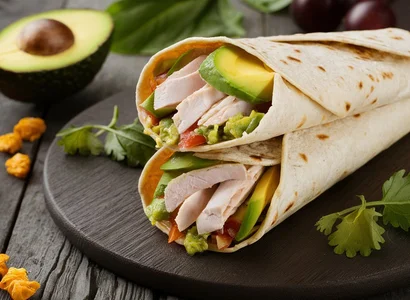
Day 18
- Breakfast: Scrambled tofu with spinach, mushrooms, and a sprinkle of lactose-free cheese
- Lunch: Turkey and avocado wrap with lettuce and a small amount of lactose-free mayo, served with carrot sticks (10 sticks) and grapes (10 grapes)
- Dinner: Grilled pork loin with roasted potatoes (½ cup) and sautéed spinach (½ cup)
Day 19
- Breakfast: Low FODMAP protein smoothie made with lactose-free milk, banana (½ banana), and a scoop of protein powder
- Lunch: Quinoa bowl with grilled chicken, bell peppers, tomatoes (small amount), and a low FODMAP sauce
- Dinner: Baked trout with lemon and herbs, served with mashed sweet potatoes (½ cup) and steamed green beans (½ cup)
Day 20
- Breakfast: Greek yogurt (lactose-free) with blueberries (¼ cup) and a sprinkle of low FODMAP granola
- Lunch: Chicken Caesar salad with romaine lettuce, grilled chicken breast, lactose-free Caesar dressing, and a sprinkle of Parmesan cheese (small amount)
- Dinner: Grilled steak with roasted carrots (½ cup) and quinoa (½ cup cooked)
Day 21
- Breakfast: Blueberry-hemp oats (1 serving of cooked gluten-free rolled oats, 2 Tbsp hemp seeds, up to 20 blueberries)
- Lunch: Lentil kale salad (½ can of black lentils, 1 small cucumber, 1 red bell pepper, 10 cherry tomatoes, 2-4 cups leafy greens)
- Dinner: Tofu & vegetable stir fry (1 block of extra-firm tofu, ½ cup each of shredded carrots, diced bell peppers, chopped broccoli, 1-2 cups brown rice)
Day 22
- Breakfast: Smoothie bowl with lactose-free yogurt, strawberries (5 medium), kiwi, and a sprinkle of chia seeds. Served with a gluten-free bagel or English muffin
- Lunch: 4 oz Grilled chicken vermicelli bowl with shredded cucumber and carrots
- Dinner: Pork tenderloin with mashed potatoes and sautéed spinach
Day 23
- Breakfast: Frittata with cherry tomatoes (3), red bell peppers (⅓ cup), and feta cheese (3 tablespoons). Serve with gluten-free toast
- Lunch: Shrimp, avocado (⅛ medium), and quinoa salad with mixed greens and a citrus vinaigrette
- Dinner: Mediterranean-style pasta with drained canned chickpeas (¼ cup), roasted eggplant (1 cup), zucchini (⅓ cup), and red bell peppers (⅓ cup), served with gluten-free pasta
Day 24
- Breakfast: Oatmeal made with lactose-free milk, topped with sliced banana (unripe) and a spoonful of peanut butter
- Lunch: Lemon and pepper baked cod with roasted sweet potato wedges (½ cup) and steamed carrots
- Dinner: Grilled steak with quinoa and roasted zucchini (⅓ cup)
Day 25
- Breakfast: Pancakes made with gluten-free flour and topped with maple syrup, lactose-free yogurt, and strawberries (5 medium)
- Lunch: Turkey and cranberry sandwich with lettuce on gluten-free bread
- Dinner: Chicken curry served with rice and a cucumber and lactose-free yogurt salad
Day 26
- Breakfast: Overnight chia seed pudding made with lactose-free milk and topped with raspberries (¼ cup) and a sprinkle of shredded coconut
- Lunch: Low-FODMAP taco salad with ground beef, lettuce, tomatoes (small amounts), lactose-free cheese, and a small serving of corn chips
- Dinner: Grilled chicken skewers with pineapple chunks, served with brown rice (½ cup cooked) and sautéed zucchini (½ cup)
Day 27
- Breakfast: Smoothie made with lactose-free yogurt, banana (½ banana), spinach, and a spoonful of almond butter
- Lunch: Quinoa salad with grilled chicken, cucumbers (small amount), cherry tomatoes (5 tomatoes), and a low-FODMAP dressing
- Dinner: Baked chicken thighs with a side of roasted sweet potatoes (½ cup) and sautéed zucchini (½ cup)
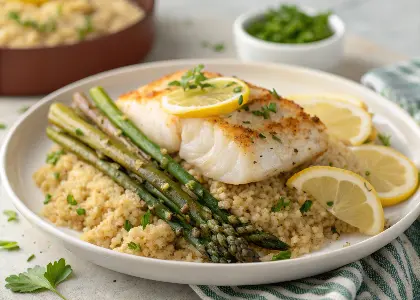
Day 28
- Breakfast: Scrambled eggs with spinach and red bell peppers, served with a side of orange slices (½ orange)
- Lunch: Grilled turkey burger with lettuce and tomato (small amounts), served with a side of sweet potato fries (½ cup)
- Dinner: Baked cod with a lemon-dill sauce, accompanied by quinoa pilaf (½ cup cooked) and steamed asparagus (½ cup)
Day 29
- Breakfast: Low-FODMAP protein pancakes topped with strawberries (¼ cup) and a drizzle of maple syrup
- Lunch: Sushi bowl with cooked salmon, avocado (¼ avocado), cucumber slices (small amount), and gluten-free soy sauce
- Dinner: Grilled pork chops with a side of brown rice (½ cup cooked) and steamed asparagus (½ cup)
Day 30
- Breakfast: Greek yogurt (lactose-free) with blueberries (¼ cup) and a sprinkle of low-FODMAP granola
- Lunch: Turkey and lettuce wrap with lactose-free cheese, served with cherry tomatoes (5 tomatoes) and a side of grapes (10 grapes)
- Dinner: Grilled salmon with a lemon-dill sauce, accompanied by mashed potatoes (½ cup) made with lactose-free milk and steamed carrots (½ cup)
Best Low FODMAP Foods
To successfully follow a low FODMAP meal plan, it’s important to understand which foods are high in FODMAPs and should be avoided or limited.
These foods are low in fermentable sugars (FODMAPs) and are often well tolerated, making them suitable for a low FODMAP meal plan.
1. Low-FODMAP Fruits:
- Strawberries
- Blueberries
- Bananas (unripe)
- Oranges
- Grapes
- Kiwi
2. Low-FODMAP Vegetables:
- Carrots
- Bell peppers
- Cucumbers
- Spinach
- Kale
- Zucchini
3. Low-FODMAP Proteins:
- Chicken
- Turkey
- Fish (e.g., salmon, cod)
- Tofu
- Eggs
- Quinoa
4. Low-FODMAP Dairy and Alternatives:
- Lactose-free milk
- Hard cheeses (e.g., cheddar, Swiss)
- Lactose-free yogurt
- Almond milk
- Coconut milk
- Oat milk
5. Low-FODMAP Grains:
- Gluten-free oats
- Quinoa
- Rice (white and brown)
- Corn
- Buckwheat
- Millet
6. Low-FODMAP Snacks:
- Nuts and seeds (e.g., almonds, walnuts, sunflower seeds)
- Dark chocolate
- Rice cakes
- Popcorn
- Olives
- Pickles
Foods to Avoid in a Low FODMAP Diet
In a low FODMAP diet, the following foods are typically avoided or limited, They contain high levels of fermentable sugars (FODMAPs) and can trigger digestive discomfort in individuals following a low FODMAP meal plan.
1. High-FODMAP Fruits:
- Apples
- Pears
- Watermelon
- Mango
- Cherries
- Apricots
2. High-FODMAP Vegetables:
- Garlic
- Onions
- Cauliflower
- Mushrooms
- Sugar snap peas
- Asparagus
3. High-FODMAP Legumes:
- Chickpeas
- Lentils
- Kidney beans
- Baked beans
- Black beans
- Split peas
4. High-FODMAP Dairy Products:
- Milk
- Soft cheese
- Yogurt
- Ice cream
- Custard
- Buttermilk
5. High-FODMAP Grains:
- Wheat-based products
- Rye
- Barley
- Some types of bread and pasta
6. High-FODMAP Sweeteners:
- High fructose corn syrup
- Honey
- Agave nectar
- Xylitol
- Sorbitol
- Mannitol
Low FODMAP Recipes (Breakfast, Lunch, and Dinner)
Here are some low FODMAP recipes for breakfast, lunch, and dinner that can get you kickstarted on planning your low FODMAP meal plan.
Low FODMAP Breakfast Recipes
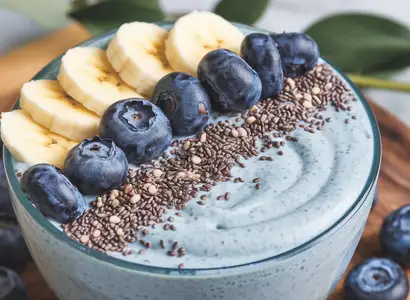
1. Low-FODMAP Blueberry Banana Smoothie Bowl
Ingredients:
- ½ cup lactose-free yogurt
- ½ banana (ripe, but not overripe)
- ½ cup blueberries
- 1 tablespoon chia seeds
- 1 tablespoon shredded coconut
- 1 tablespoon sliced almonds
Instructions:
- In a blender, combine the lactose-free yogurt, banana, and blueberries. Blend until smooth.
- Pour the smoothie into a bowl.
- Top with chia seeds, shredded coconut, sliced almonds, and additional blueberries if desired.
- Enjoy immediately with a spoon.

2. Low-FODMAP Veggie Omelette
Ingredients:
- 2 eggs
- ¼ cup diced bell peppers
- ¼ cup diced zucchini
- ¼ cup diced spinach
- Salt and pepper to taste
- 1 tablespoon olive oil
Instructions:
- In a bowl, whisk the eggs and season with salt and pepper.
- Heat olive oil in a non-stick pan over medium heat.
- Add diced bell peppers, zucchini, and spinach to the pan and sauté until softened.
- Pour the whisked eggs over the sautéed veggies, tilting the pan to spread evenly.
- Cook until the edges start to set, then gently fold the omelette in half.
- Cook for another minute until the eggs are fully cooked.
- Slide the omelet onto a plate and serve hot.
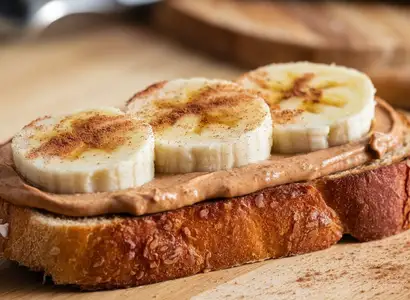
3. Low-FODMAP Banana Almond Butter Toast
Ingredients:
- 2 slices of gluten-free bread
- 2 tablespoons almond butter
- ½ banana, sliced
- Cinnamon (optional)
Instructions:
- Toast the gluten-free bread slices until golden brown.
- Spread almond butter evenly on each slice.
- Arrange sliced bananas on top of the almond butter.
- Sprinkle with a dash of cinnamon if desired.
- Serve immediately for a delicious and satisfying breakfast.
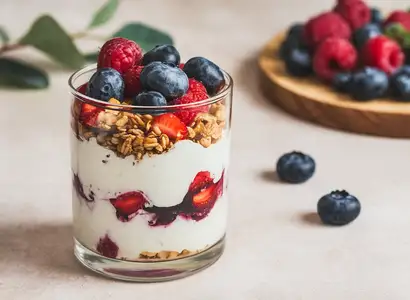
4. Low-FODMAP Greek Yogurt Parfait
Ingredients:
- 1 cup lactose-free Greek yogurt
- ¼ cup low FODMAP granola
- ¼ cup mixed berries (e.g., strawberries, blueberries, raspberries)
- 1 tablespoon maple syrup (optional)
Instructions:
- In a glass or bowl, layer lactose-free Greek yogurt, low-FODMAP granola, and mixed berries.
- Repeat the layers until all ingredients are used, ending with a sprinkle of granola and berries on top.
- Drizzle with maple syrup if desired for added sweetness.
- Enjoy this nutritious and filling parfait for breakfast or as a snack.
Low FODMAP Lunch Recipes
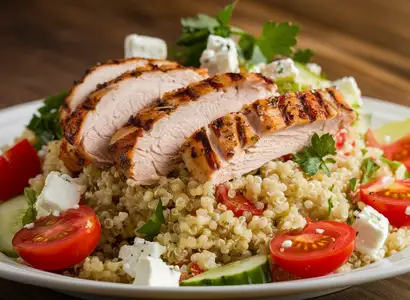
1. Low-FODMAP Quinoa Salad with Grilled Chicken
Ingredients:
- 1 cup cooked quinoa (cooled)
- 4 ounces grilled chicken breast, sliced
- ½ cup cherry tomatoes, halved
- ¼ cup sliced cucumber
- ¼ cup crumbled feta cheese (optional)
- 2 tablespoons chopped fresh parsley
- 1 tablespoon olive oil
- 1 tablespoon lemon juice
- Salt and pepper to taste
Instructions:
- In a large bowl, combine the cooked quinoa, grilled chicken breast, cherry tomatoes, sliced cucumber, crumbled feta cheese (if using), and chopped parsley.
- In a small bowl, whisk together the olive oil, lemon juice, salt, and pepper.
- Pour the dressing over the quinoa salad and toss to combine.
- Serve immediately or refrigerate until ready to eat.
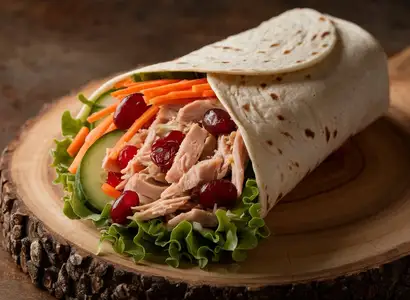
2. Low-FODMAP Turkey and Cranberry Salad Wrap
Ingredients:
- 4 ounces sliced cooked turkey
- ¼ cup shredded carrots
- ¼ cup chopped cucumber
- 2 tablespoons dried cranberries
- 1 tablespoon mayonnaise (check for low FODMAP ingredients)
- 2 large lettuce leaves
- 1 gluten-free wrap
Instructions:
- In a bowl, mix together sliced cooked turkey, shredded carrots, chopped cucumber, dried cranberries, and mayonnaise.
- Lay out the lettuce leaves on a gluten-free wrap.
- Spoon the turkey salad mixture onto the lettuce leaves.
- Roll up the wrap tightly and slice in half.
- Serve immediately or pack for a delicious and portable lunch.
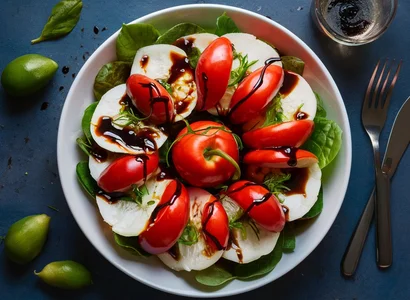
3. Low-FODMAP Caprese Salad
Ingredients:
- 1 cup cherry tomatoes, halved
- ½ cup fresh mozzarella cheese, cubed
- Fresh basil leaves
- 1 tablespoon extra virgin olive oil
- 1 tablespoon balsamic vinegar (optional)
- Salt and pepper to taste
Instructions:
- In a bowl, combine cherry tomatoes and fresh mozzarella cheese.
- Tear fresh basil leaves and add them to the bowl.
- Drizzle extra virgin olive oil over the salad and toss gently to coat.
- Add balsamic vinegar if desired for extra flavor.
- Season with salt and pepper to taste.
- Serve this refreshing Caprese salad as a light and flavorful lunch option.
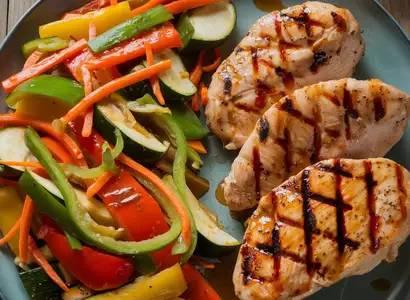
4. Low-FODMAP Chicken and Vegetable Stir-Fry
Ingredients:
- 8 ounces boneless, skinless chicken breast, sliced
- 1 cup mixed bell peppers, sliced
- 1 cup zucchini, sliced
- ½ cup carrots, julienned
- 2 tablespoons gluten-free soy sauce
- 1 tablespoon sesame oil
- 1 tablespoon chopped green onions (green parts only)
- Cooked rice or quinoa for serving
Instructions:
- Heat sesame oil in a large skillet or wok over medium-high heat.
- Add sliced chicken breast to the skillet and stir-fry until cooked through.
- Add mixed bell peppers, zucchini, and carrots to the skillet and continue to stir-fry until vegetables are tender-crisp.
- Pour gluten-free soy sauce over the chicken and vegetables, and toss to coat evenly.
- Stir in chopped green onions (green parts only) for added flavor.
- Serve the chicken and vegetable stir-fry over cooked rice or quinoa for a satisfying and nutritious lunch.
Low FODMAP Dinner Recipes
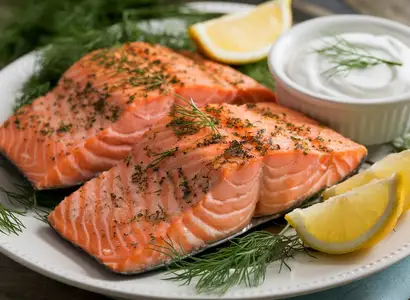
1. Low-FODMAP Grilled Salmon with Lemon-Dill Sauce
Ingredients:
- 4 salmon fillets (4-6 ounces each)
- Salt and pepper to taste
- 1 tablespoon olive oil
- 1 tablespoon fresh dill, chopped
- 1 tablespoon lemon juice
- 1 tablespoon Dijon mustard (check for low-FODMAP ingredients)
- ¼ cup lactose-free sour cream
- Lemon wedges for garnish
Instructions:
- Preheat the grill to medium-high heat.
- Season the salmon fillets with salt, pepper, and olive oil.
- In a small bowl, mix together the chopped dill, lemon juice, Dijon mustard, and lactose-free sour cream to make the sauce.
- Grill the salmon fillets for about 4-5 minutes per side, or until cooked through and flaky.
- Serve the grilled salmon with the lemon-dill sauce drizzled on top and garnish with lemon wedges.

2. Low-FODMAP Grilled Lemon Herb Chicken
Ingredients:
- 4 boneless, skinless chicken breasts
- 2 tablespoons olive oil
- 2 tablespoons fresh lemon juice
- 1 tablespoon chopped fresh herbs (such as thyme, rosemary, or parsley)
- Salt and pepper to taste
Instructions:
- In a bowl, mix together olive oil, fresh lemon juice, chopped herbs, salt, and pepper.
- Place chicken breasts in a resealable plastic bag and pour the marinade over them.
- Seal the bag and refrigerate for at least 30 minutes to marinate.
- Preheat the grill to medium-high heat.
- Grill the marinated chicken breasts for about 6-7 minutes per side, or until cooked through and juices run clear.
- Serve the grilled lemon herb chicken hot with your choice of low FODMAP sides, such as roasted potatoes and steamed green beans.
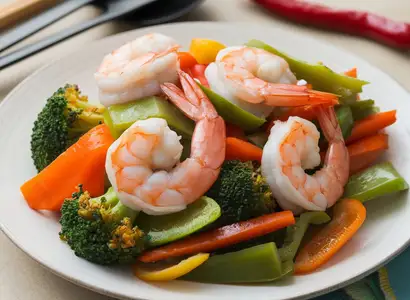
3. Low FODMAP Shrimp and Vegetable Stir-Fry
Ingredients:
- 1 pound large shrimp, peeled and deveined
- 2 cups mixed bell peppers, sliced
- 1 cup broccoli florets
- ½ cup sliced carrots
- 2 tablespoons gluten-free soy sauce
- 1 tablespoon sesame oil
- 1 tablespoon minced ginger
- Cooked rice or quinoa for serving
Instructions:
- Heat sesame oil in a large skillet or wok over medium-high heat.
- Add minced ginger to the skillet and sauté until fragrant.
- Add shrimp to the skillet and stir-fry until pink and cooked through. Remove shrimp from the skillet and set aside.
- Add sliced bell peppers, broccoli florets, and sliced carrots to the skillet and stir-fry until vegetables are tender-crisp.
- Return cooked shrimp to the skillet and pour gluten-free soy sauce over the shrimp and vegetables. Toss to coat evenly.
- Serve the shrimp and vegetable stir-fry over cooked rice or quinoa for a flavorful and satisfying dinner.

4. Low FODMAP Zucchini Noodles with Pesto
Ingredients:
- 2 medium zucchinis, spiralized into noodles
- ½ cup low-FODMAP pesto sauce (check for garlic and onion content)
- ¼ cup cherry tomatoes, halved
- ¼ cup pine nuts, toasted
- Fresh basil leaves for garnish
- Grated Parmesan cheese (optional)
Instructions:
- Spiralize zucchinis into noodles using a spiralizer.
- Heat a large skillet over medium heat and add zucchini noodles.
- Cook the zucchini noodles for 3-4 minutes until just tender, stirring occasionally.
- Add low FODMAP pesto sauce to the skillet and toss to coat the zucchini noodles evenly.
- Remove the skillet from heat and add halved cherry tomatoes and toasted pine nuts.
- Garnish with fresh basil leaves and grated Parmesan cheese if desired.
- Serve the zucchini noodles with pesto as a light and flavorful low FODMAP dinner option.
Resources
1. Monash University FODMAP Diet App
- This app provides a comprehensive database of low FODMAP meals and can help us make informed choices while grocery shopping or dining out.
2. The FODMAP Friendly Kitchen Cookbook
- This cookbook offers a wide range of delicious low FODMAP recipes to inspire our meal planning.
3. International Foundation for Gastrointestinal Disorders
- This website provides valuable information and resources on various digestive disorders, including the low FODMAP meal plan.
Conclusion
Following a 30-day low FODMAP meal plan can be a delicious and effective solution for improving your gut health.
By understanding FODMAPs, creating a well-balanced low FODMAP meal plan, and incorporating flavorful low FODMAP recipes and low FODMAP foods, you can alleviate symptoms of digestive disorders and promote overall well-being.
If you’re ready to improve your gut health and embark on a 30-day low FODMAP diet, start by shopping low FODMAP foods and creating a low FODMAP meal plan that suits your preferences and dietary needs.
Don’t forget to track your progress and consult with a registered dietitian for personalized guidance along the way.
You may also check out these articles:
- 7-day meal plan for prediabetes
- Carb cycling meal plan
- How long does it take to reverse prediabetes
- 21-day fatty liver diet plan
- 7-day meal plan for gestational diabetes
- Benefits of eating green bananas
- Health benefits of moringa
- Life expectancy for individuals with fatty liver disease
- How to initiate end of life conversations with elderly
- Find urgent care in your area
- Banana dog treat recipes
- Can dogs eat shrimp tails?
- Daniel Fast meal plan
- 60 mouthwatering Daniel Fast recipes

